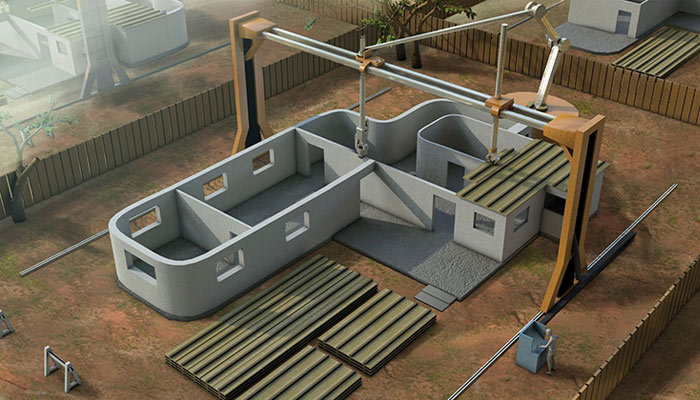As we progress through the advancing landscape of engineering, one breakthrough stands significantly in the industry of infrastructure: 3D printing. This exceptional technology is revolutionizing the method structures and frameworks are conceived and constructed, introducing a new era of effectiveness, eco-friendliness, and originality.
Reshaping Infrastructure: One Stratum at a Phase
The integration of 3D printing in construction presents numerous transformative benefits. Primary among these is the substantial decrease in substance excess. Traditional building approaches typically lead in considerable waste materials that lead to sustainability-related depletion. In contrast, 3D printing utilizes a precise incremental strategy, employing only the necessary portion of resource and thus minimizing excess substantially.
Another significant perk is the immense decrease in development duration. Undertakings that traditionally demand long periods can be finished in a segment of the timeline with 3D fabrication technologies. This time reduction is due to the automated nature of 3D printers that can function around the clock without human involvement, significantly minimizing overall project timelines.
Moreover, 3D manufacturing unlocks opportunities for constructing intricate, custom structures at no extra expense. The adaptability of 3D printers allows for intricate designs and shapes to be created that would either be highly expensive or impossible to attain with traditional building techniques. This capability not only elevates structural visual appeal but also enables engineers to maximize designs for better efficiency and longevity.

Lowering Expenditures and Enhancing Availability
Cost minimization is yet another major advantage brought about by 3D manufacturing in building. By cutting workforce spending and decreasing the timeline needed to complete projects, the total budget associated with constructing structures is lowered. Additionally, low-cost 3D printing machines are getting more accessible, making this method attainable for smaller companies and entrepreneurs enthusiastic to experiment with its possibilities.
The cost-effectiveness of these devices also paves the way for creativity in connected fields such as clothing printing. While primarily acknowledged in construction industries, the range of 3D printing spans into multiple areas including fashion. Here, designers experiment with 3D fabricated attire, expanding design boundaries and revolutionizing textile design while utilizing low production expenses.
An Eco-Friendly Era Driven by Innovation
Sustainability is another cornerstone of this technology’s attraction in the construction field. 3D printing encourages a eco-conscious approach to construction by minimizing substance surplus and power usage. Additionally, it enables the integration of eco-friendly substances like reclaimed plastics or blended materials, which additionally decreases the ecological impact of this traditionally heavy-polluting industry.
The global shift to green practices finds a powerful supporter in 3D manufacturing innovations, potentially transforming how architectural regulations and criteria are developed in the future. By implementing these cutting-edge techniques, the construction sector advances toward achieving greener functional strategies.
Bringing Dreams to Reality
Visualize neighborhood hubs in low-income regions being constructed within a short time to meet urgent demands or designers creating wonders inspired by environmental patterns that merge perfectly into their surroundings – such situations are not merely hypothetical but are fast becoming possible through 3D fabrication.
While these breakthroughs signify just the onset, they suggest a era where development integrates perfectly with both human ambitions and environmental care.
If we advance on this path, building will not only represent the structural creation of environments but also represent a pledge to creative approaches and sustainable practices. Bridging creativity with functionality, 3D manufacturing is ready to transform our tangible reality in manners we are just beginning to grasp.
Through ongoing progress and an acceptance of these futuristic strategies, our built surroundings will surely evolve into manifestations of societal creativity driven by the accuracy and limitless potential of 3D printing.
More information about may in soi nhua just go to this internet page: read here
